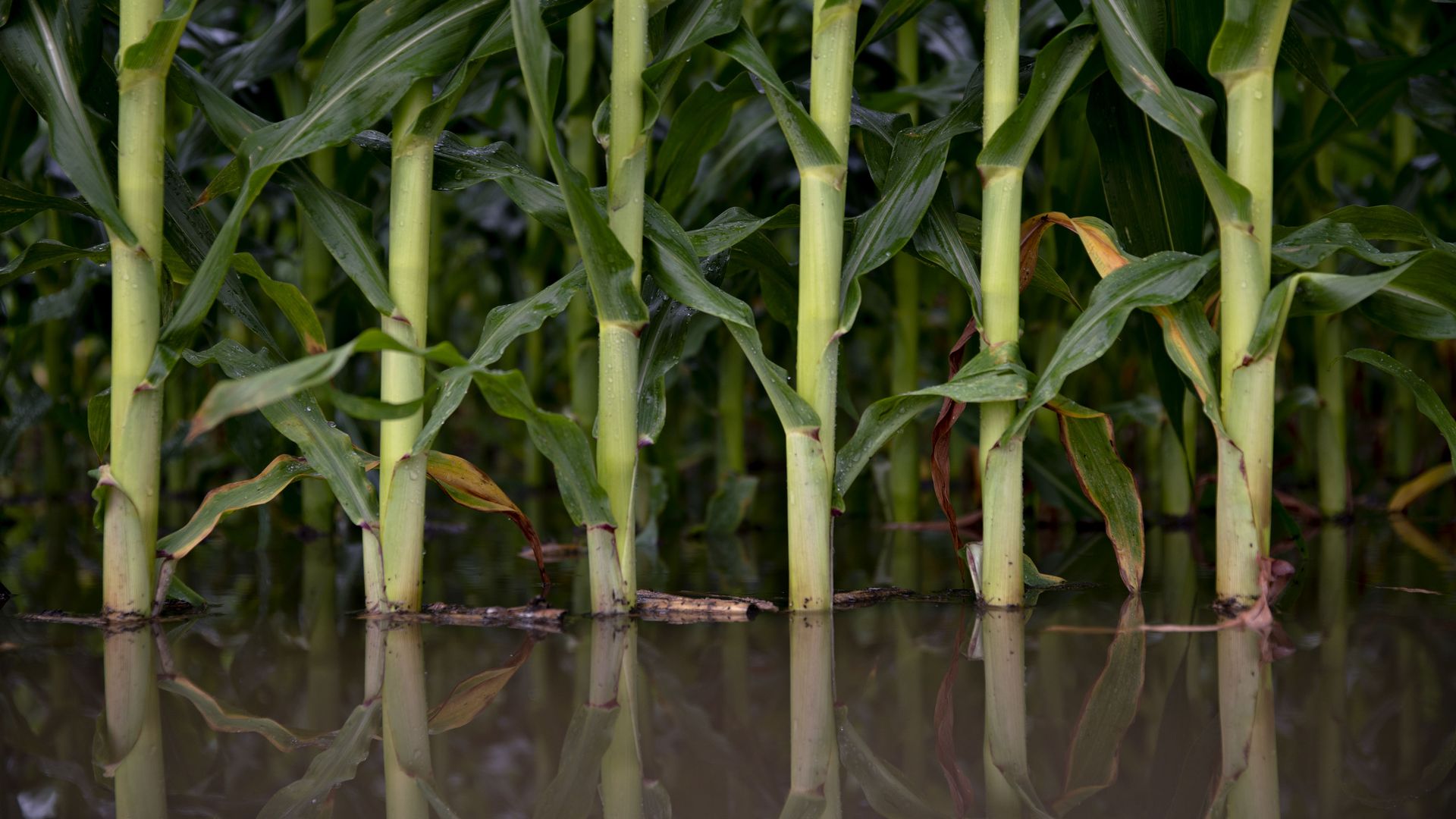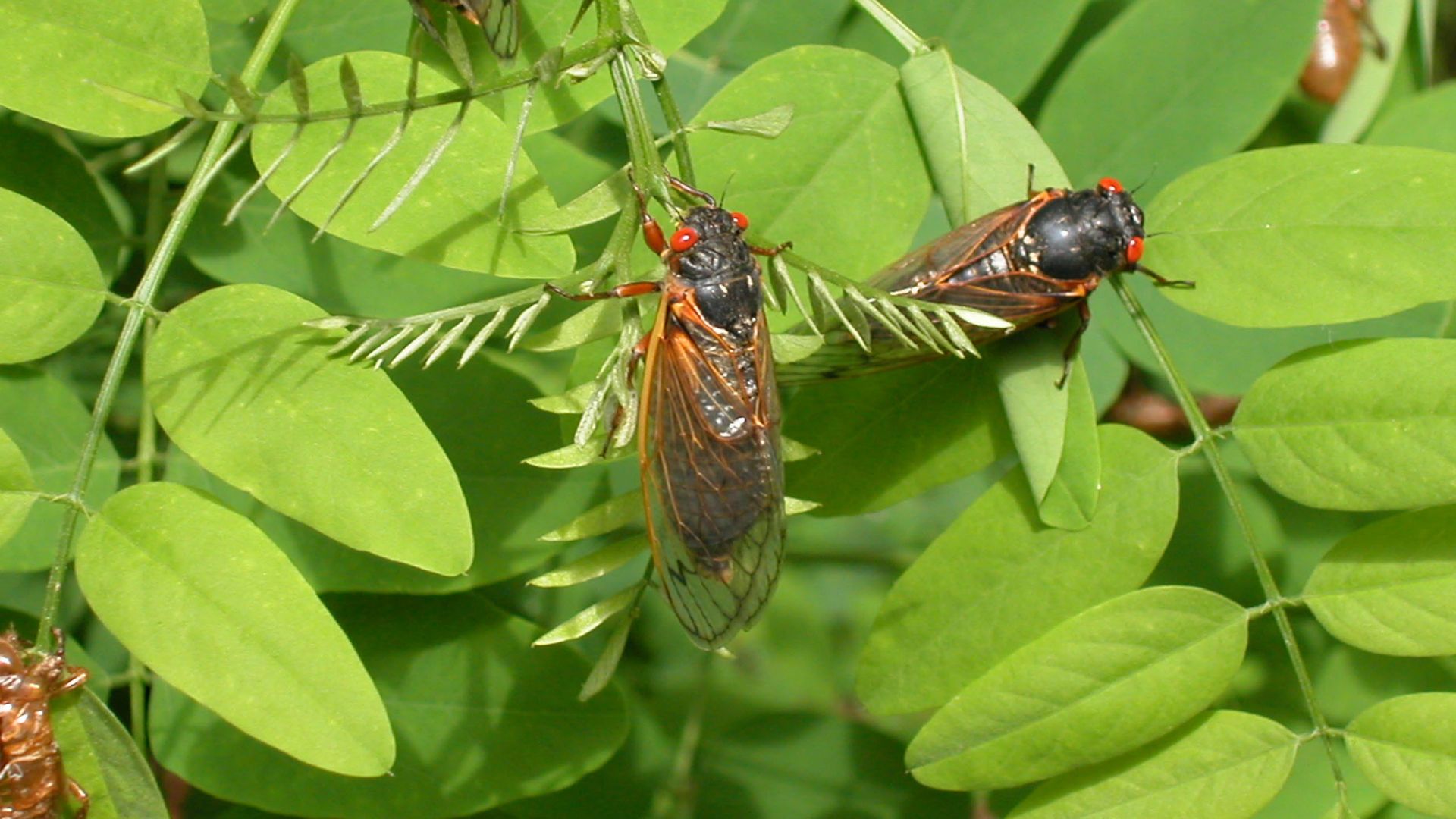| | | | | | | Presented By Deloitte | | | | Axios Future | | By Alison Snyder ·Apr 03, 2021 | | Thanks for reading Axios Future. Today we're looking at supersonic air travel, private space stations, the arrival of cicadas and more in 1,629 words, a 6-minute read. | | | | | | 1 big thing: Supersonic travel is about to make a comeback |  | | | Illustration: Sarah Grillo/Axios | | | | In a few years, it might be possible to fly from Washington, D.C., to Paris in four hours — instead of eight — or from San Francisco to Tokyo in just six hours aboard a new crop of supersonic jets, Axios' Joann Muller reports. Why it matters: High-speed air travel promises to shrink the planet, putting far-away vacation destinations within closer reach and enabling business travelers to attend meetings on another continent and return the same day. The big picture: Affordable, sustainable, high-speed flight has the potential to revolutionize commercial air travel, just as the jet engine did in the late 1950s. - Yes, but: Engineers must first solve technical, business and environmental challenges that doomed previous efforts at supersonic travel, most notably, the transatlantic Concorde.
Flashback: British Airways and Air France flew the Concorde from 1976 to 2003 on international routes like New York to London in under three hours. - But the "great white bird" was terrible for the environment and couldn't make a profit, even with round-trip fares averaging $12,000.
Fast forward: A handful of startups hopes a fresh approach — lightweight materials, efficient engine technologies and cleaner fuels — will make supersonic jets much cheaper to operate and thus economically viable for everyday travel. Boeing-backed Aerion is developing a supersonic business jet that will begin production in Florida in 2023 and should be ready for customer delivery by 2027. - NetJets, Warren Buffett's fractional jet company, this week ordered 20 of the planes, for $120 million each.
- Also this week, Aerion teased a concept for its next plane: a larger 50-seat commercial airliner that would fly at Mach 4-plus speed — more than four times the speed of sound — "enabling flight between LA and Tokyo in less than three hours."
Boom Supersonic, backed by Japan Airlines, American Express Ventures, Emerson Collective and others, will begin production of its Overture supersonic aircraft in 2023. - A handful of other startups, including Hermeus and Spike Aerospace, are also developing supersonic jets.
Sustainability, not just speed, is a core goal. The new planes will be less harmful to the environment, the companies say, because they're designed to run on sustainable aviation fuels (SAFs). - SAFs are made from sustainable feedstocks like household solid waste, algae or used cooking oil, and producers like BP claim they can produce up to 80% lower carbon emissions than traditional jet fuel.
- But SAFs are in short supply, so production needs to scale significantly in the next few years to meet the demand for cleaner-flying planes.
Reality check: For all the promising developments, supersonic commercial flights are still limited by regulatory hurdles, cautions Iain Boyd, an aerospace engineering professor at the University of Colorado. - "This is one of the very few high technology things where it feels like we have gone backward," he said.
- "You used to be able to fly supersonically if you had a lot of money. Today, you cannot. ... We've been flying the same speeds for 50–60 years."
The biggest problem, he says, is the noise associated with supersonic flight, on both takeoff and landing and at 60,000 feet. - Planes that fly past the speed of sound — about 760 mph — create shock waves that hit the ground with a startling thud, or "sonic boom."
- That's why the FAA won't let them fly over land, limiting them to transoceanic routes.
What to watch: NASA researchers, along with Lockheed Martin, are designing a new supersonic plane that turns the sonic boom into "a gentle thump." - NASA plans to fly the plane over select U.S. communities to see how people react. That data will then help regulators set noise standards for supersonic flight.
Ready the full story. |     | | | | | | 2. The race to design private space stations |  | | | Illustration: Annelise Capossela/Axios | | | | Companies are rapidly designing private space stations that could one day dominate operations in orbit around Earth, Axios' Miriam Kramer reports. Why it matters: NASA is hoping private industry will start to take over operations in low-Earth orbit once the International Space Station comes to an end, creating a robust commercial market in that part of space. - Commercially operated private space stations are a big part of NASA's vision to buy services from companies in orbit and then focus on further afield goals like getting to the Moon and Mars.
Driving the news: Under a new initiative, NASA will help support companies as they develop space stations and carry out preliminary design reviews — an important technical assessment of what it will take to get a station flying — by the end of fiscal year 2025. - On the heels of that announcement, Sierra Nevada Corporation announced its plans to build a private space station.
- Another company, Axiom Space, already has plans in motion to build its own commercial space station after first attaching a module to the International Space Station at some point in the coming years.
Between the lines: NASA wants to avoid having a gap in the agency's regular access to orbit when the ISS is retired before the end of the decade. - The space agency was forced to rely on Russia for access to orbit when the space shuttle program ended before commercial flyers like SpaceX were up and running.
- By partnering with private companies now, the agency is signaling it wants to be able to transition smoothly to private stations instead of a hard stop when the ISS ends.
NASA has already effectively proved out this kind of public/private partnership model with SpaceX flying astronauts to orbit. But, but, but: Operating a private space station is a much bigger task than simply launching people to space, and some experts in the industry say there isn't enough time for private companies to get their space stations functioning before the ISS comes to an end. - The funding attached to NASA's new program also may not be enough to get these stations off the ground in time.
- "I don't see how they're going to get it together by 2024 [or] 2028," Victoria Samson of the Secure World Foundation told Axios. "I think it is much more likely that we'll see the Chinese space station well before the commercial space station or a private-sector space station."
Share this story. |     | | | | | | 3. Bioengineering stronger crops |  | | | Standing water surrounds corn plants. Photo: Daniel Acker/Bloomberg via Getty Images | | | | A leading synthetic biology company is using bioengineering to try to create more resilient crops. Why it matters: Extreme weather and a 7.8 billion-and-growing global population are ratcheting up pressure on an already fragile food system — and the environments that support it. The big picture: Researchers are using synthetic biology to tackle a range of problems in agriculture — from reducing synthetic fertilizer use to improving the nutritional value of crop plants. - An estimated 20–40% of crops are lost to pests around the world each year, costing the global economy about $290 billion, according to the UN Food and Agriculture Organization.
- More than 550 insect species are resistant to pesticides, and it costs an estimated $300 million "to bring an insecticide from molecule to market, and about eight to 10 years," Bruce Steward of insecticide and chemical company FMC recently told Hoosier Ag Today.
What's next: Gingko Bioworks and Corteva Agriscience announced a two-year research agreement to use the tools of synthetic biology to try to speed the discovery — and lower the cost — of natural compounds for more sustainable, effective and specific insecticides, pesticides and fungicides. - Gingko will use its cell engineering platform and library of DNA sequences to identify, improve and produce different enzymes and natural compounds that Corteva will then test in greenhouse trials.
- "Nature has solutions for farmers to address food loss and crop protection, and it is a matter of harvesting those," says Jennifer Wipf, senior vice president of commercial cell engineering at Gingko.
- Gingko hopes to speed the process, but regulatory challenges will be part of the development, says Kevin Madden, senior vice president of platform commercialization at the company.
Go deeper: Watch Axios' new video about how synthetic biology is changing what we eat — and more. |     | | | | | | A message from Deloitte | | The top four industry trends of 2021 | | |  | | | | Deloitte's 2021 U.S. Industry Outlooks report reveals the four key trends shared across industries during the pandemic: - Accelerating digitization.
- Evolving the customer relationship.
- Investing in tomorrow's business foundations.
- Focusing on corporate social responsibility.
| | | | | | 4. Rapid coronavirus testing moves forward |  | | | Illustration: Aïda Amer/Axios | | | | The federal government is pushing forward on rapid, at-home coronavirus tests, Axios' Marisa Fernandez reports. Why it matters: Testing remains an important part of controlling the pandemic, even as vaccinations continue to rise — both for people who haven't yet been vaccinated and to catch emerging outbreaks early. Driving the news: The Food and Drug Administration issued an emergency use authorization this week for two over-the-counter coronavirus tests, from Abbott and Quidel. - Also this week, the Centers for Disease Control and Prevention and the National Institutes of Health announced a program that will provide volunteers in Tennessee and North Carolina with at-home tests.
- Recipients can also take part in an optional survey designed to determine whether frequent testing changes people's behaviors.
|     | | | | | | 5. Worthy of your time | | Beauty filters are changing the way young girls see themselves (Tate Ryan-Mosley — MIT Tech Review) Jolly gene giant: The line between Beijing and a biotech giant is blurring (Brent Crane — The Wire China) Living in a world without stars: This great reset offers little hope for the future of humanity (Curtis White — Lapham's Quarterly) Lost in thought: The psychological risks of meditation (David Kortava — Harper's) |     | | | | | | 6. 1 spring thing: Brace for Brood X |  | | | Adult cicadas in Reston, Va., during their last visit in 2004. Photo: Richard Ellis/Getty Images | | | | Like people in a pandemic winter, periodical cicadas are waiting for the warmer weather of spring. What's happening: In a few weeks, billions of the insects are predicted to emerge in parts of the eastern U.S. after 17 years — and the vast majority of their life — underground. - Brood X is one of the largest of 15 groups of cicadas that come out en masse in the U.S. at different time intervals — some every 13 years, others every 17, and in rarer alignments, at the same time.
- Periodical cicadas (Magicicada) make an appearance most years. (And the adults of annual cicadas, which have a two-year life cycle, emerge every year to reproduce.)
What to expect: Once the soil temperature reaches 64°F, typically in late April or early May, billions of noisy, red-eyed, black-bodied cicadas will emerge in Pennsylvania, Tennessee, Indiana and several spots in between. - They'll then make a bunch of noise, mate and lay their eggs in trees — all within four to six weeks.
- Those cicadas will die and their nymphs will fall to the ground, bury in to feed on tree roots, and the cicada cycle starts again.
What's next: Who knows what the future holds — and, as Vox's Brian Resnick notes, how cicadas even know when it has arrived — but set your clocks: Brood X will be back in 2038. |     | | | | | | A message from Deloitte | | Racial equity and businesses: Beyond diversity and inclusion | | |  | | | | Businesses are becoming more diverse and inclusive, but their efforts have yet to change outcomes for millions of Black Americans. What this means: To achieve a more equitable future, companies must challenge beliefs, change behaviors and take action to dismantle systemic racism and inequity. | | | | | | Axios thanks our partners for supporting our newsletters.
Sponsorship has no influence on editorial content. Axios, 3100 Clarendon Blvd, Suite 1300, Arlington VA 22201 | | | You received this email because you signed up for newsletters from Axios.
Change your preferences or unsubscribe here. | | | Was this email forwarded to you?
Sign up now to get Axios in your inbox. | | | | Follow Axios on social media:    | | | | | |









No comments:
Post a Comment